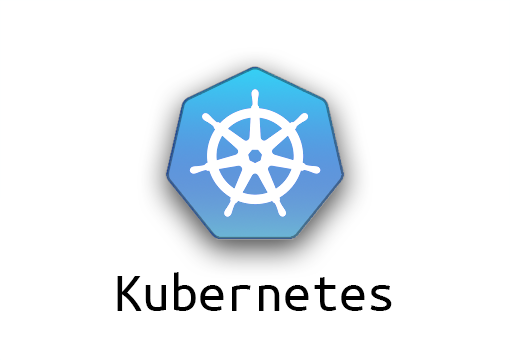How to configure dashboard on kubernetes 1.8.1
Step by step notes for kubernetes dashboard setup

Dashboard
This is the second of three articles, the other two are
- How to install Kubernetes 1.8.1 on centos 7.3
- Configure Nginx as Ingress Controller Kubernetes offers a dashboard where you can visualise the status of you cluster, as you can see from the picture below you have a global view of everything running on the cluster.

The following configuration, is not the most secure, this is for simplicity and you can always disable it by simply running kubectl delete -f dashboard.yaml.
Configuring dashboard
#Start heapster for dashboard:
git clone https://github.com/kubernetes/heapster.git
cd heapster
kubectl create -f deploy/kube-config/influxdb/
kubectl create -f deploy/kube-config/rbac/heapster-rbac.yaml
cat <<EOF > ./dashboard.yaml
# ------------------- Dashboard Service Account ------------------- #
apiVersion: v1
kind: ServiceAccount
metadata:
labels:
k8s-app: kubernetes-dashboard
name: kubernetes-dashboard
namespace: kube-system
---
# ------------------- Dashboard Role & Role Binding ------------------- #
kind: Role
apiVersion: rbac.authorization.k8s.io/v1
metadata:
name: kubernetes-dashboard-minimal
namespace: kube-system
rules:
# Allow Dashboard to create and watch for changes of 'kubernetes-dashboard-key-holder' secret.
- apiGroups: [""]
resources: ["secrets"]
verbs: ["create", "watch"]
- apiGroups: [""]
resources: ["secrets"]
# Allow Dashboard to get, update and delete 'kubernetes-dashboard-key-holder' secret.
resourceNames: ["kubernetes-dashboard-key-holder"]
verbs: ["get", "update", "delete"]
# Allow Dashboard to get metrics from heapster.
- apiGroups: [""]
resources: ["services"]
resourceNames: ["heapster"]
verbs: ["proxy"]
---
apiVersion: rbac.authorization.k8s.io/v1
kind: RoleBinding
metadata:
name: kubernetes-dashboard-minimal
namespace: kube-system
roleRef:
apiGroup: rbac.authorization.k8s.io
kind: Role
name: kubernetes-dashboard-minimal
subjects:
- kind: ServiceAccount
name: kubernetes-dashboard
namespace: kube-system
---
apiVersion: rbac.authorization.k8s.io/v1
kind: ClusterRoleBinding
metadata:
name: kubernetes-dashboard
labels:
k8s-app: kubernetes-dashboard
roleRef:
apiGroup: rbac.authorization.k8s.io
kind: ClusterRole
name: cluster-admin
subjects:
- kind: ServiceAccount
name: kubernetes-dashboard
namespace: kube-system
---
# ------------------- Dashboard Deployment ------------------- #
kind: Deployment
apiVersion: extensions/v1beta1
metadata:
labels:
k8s-app: kubernetes-dashboard
name: kubernetes-dashboard
namespace: kube-system
spec:
replicas: 1
revisionHistoryLimit: 10
selector:
matchLabels:
k8s-app: kubernetes-dashboard
template:
metadata:
labels:
k8s-app: kubernetes-dashboard
spec:
containers:
- name: kubernetes-dashboard
image: gcr.io/google_containers/kubernetes-dashboard-amd64:v1.7.1
ports:
- containerPort: 9090
protocol: TCP
args:
# Uncomment the following line to manually specify Kubernetes API server Host
# If not specified, Dashboard will attempt to auto discover the API server and connect
# to it. Uncomment only if the default does not work.
# - --apiserver-host=http://my-address:port
volumeMounts:
# Create on-disk volume to store exec logs
- mountPath: /tmp
name: tmp-volume
livenessProbe:
httpGet:
path: /
port: 9090
initialDelaySeconds: 30
timeoutSeconds: 30
volumes:
- name: tmp-volume
emptyDir: {}
serviceAccountName: kubernetes-dashboard
# Comment the following tolerations if Dashboard must not be deployed on master
tolerations:
- key: node-role.kubernetes.io/master
effect: NoSchedule
---
# ------------------- Dashboard Service ------------------- #
kind: Service
apiVersion: v1
metadata:
labels:
k8s-app: kubernetes-dashboard
name: kubernetes-dashboard
namespace: kube-system
spec:
ports:
- port: 80
targetPort: 9090
selector:
k8s-app: kubernetes-dashboard
EOF
kubectl create -f ./dashboard.yaml
You can access the dashboard by running from your local machine
kubectl proxy
Now you should be able to see in your browser here http://localhost:8001/ui











Twitter
Google+
Facebook
Reddit
LinkedIn
StumbleUpon
Pinterest
Email